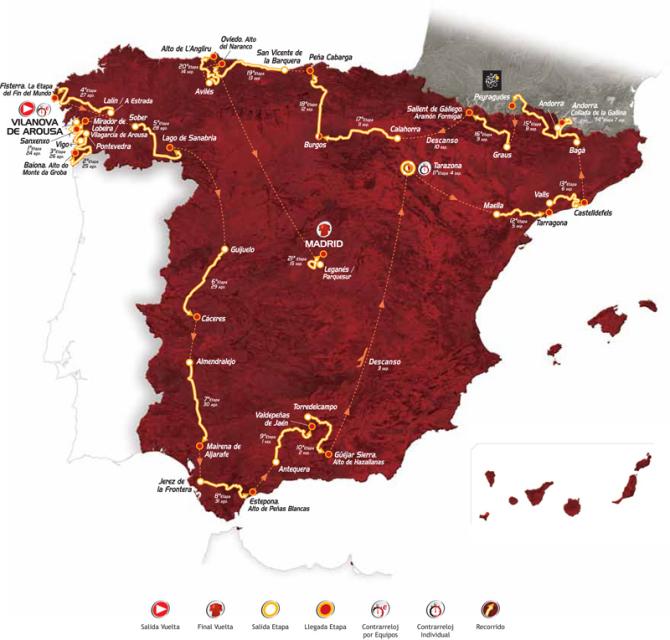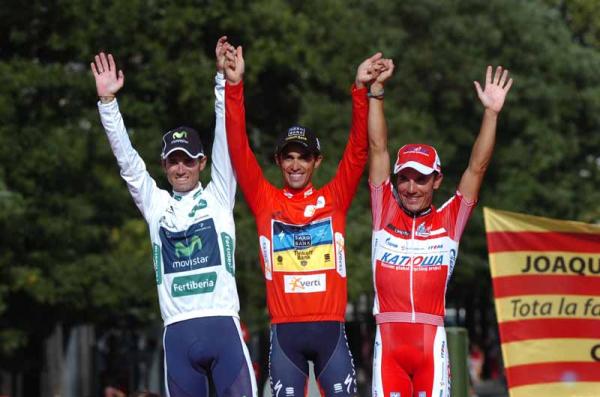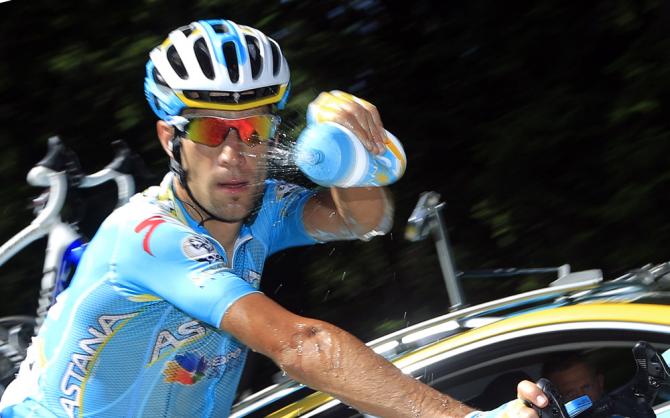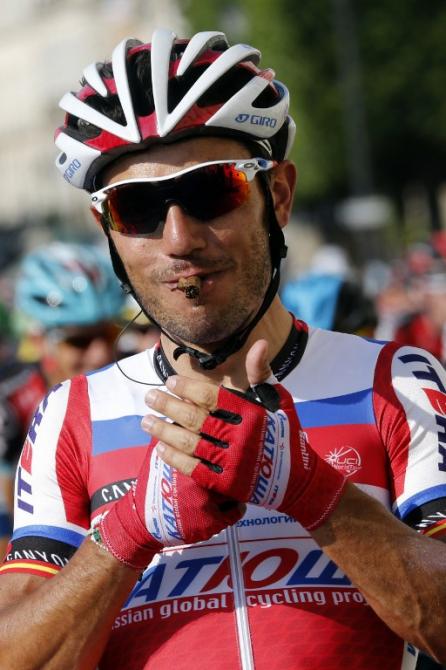Vuelta a España: Five key stages
Where and when the Vuelta will be won and lost




Stage 2: Pontevedra – Baiona. Alto Do Monte Da Groba, 177.7 km. Sunday 25 August
Unlike at the Tour de France or the Giro d’Italia, where all of the favourites line up close to top form after months of very specific preparation, the Vuelta’s positioning on the calendar means that a sizeable proportion of contenders – tired from exertions earlier in the summer – arrive at the start hoping to ride themselves into winning condition over the first week.
It’s a luxury that has been denied them this time around, however, with the first summit finish atop the Alto Do Monte Da Groba arriving on just the second day of racing. Received wisdom says that the first mountain stage of a grand tour won’t tell us who will win the race but will give us a fair idea of who won’t, and the adage seems particularly apt for this year’s Vuelta.
Coming at the end of a largely flat day of racing, the transition from big to little ring at the foot of the Alto Do Monte Da Groba (11km at 5.6%) will be a brutal one, and the toughest section of the ascent (10%) comes after just 3 kilometres of climbing. Some lofty names could be left downscaling their Vuelta objectives from “general classification challenge” to “world championships preparation” if they are not switched on here.
When Giro winner Vincenzo Nibali (Astana) struggled on his return to action at the Tour of Poland, he would have been quietly worried by this stage but his solid showing at the Vuelta a Burgos suggests that he ought to hit the ground running in Galicia. Joaquim Rodriguez (Katusha) will hope that he doesn’t pay for his lay-off between the Tour and the Vuelta, but assuming he survives the cull at the bottom of the climb, he is a contender to take early control of the red jersey here. Although the gradient levels out at the midway, the road kicks back up in the final two kilometres and the finale ought to suit the punchiest of climbers.
Stage 10: Torredelcampo – Guéjar Sierra. Alto Hazallanas, 186.6km. Monday 2 September
The liberal smattering of climbs and hilltop finishes in the opening week of the race present the overall contenders with opportunities to snatch bonus seconds and score psychological points, but the first high mountain stage of the Vuelta gives them the chance to make some very significant gains in potentially sweltering conditions in Andalusia.
Get The Leadout Newsletter
The latest race content, interviews, features, reviews and expert buying guides, direct to your inbox!
The rolling opening 150 kilometres pose their own difficulties, but the day’s real obstacles are shoe-horned into the final 35 kilometres as the bunch tackles the climbs of the Alto de Monachil (8.5 km at 7.7 %) and Alto de Hazallanas (15.8 km at 5 %) in rapid succession.
Samuel Sanchez used the Monachil as the springboard for his stage victory in nearby Granada back in 2007 and the short climb has the potential to tear the race apart. The first half of the ascent is a steady grind but the road briefly rears up to 15% inside the final three kilometres, although a brief descent shortly before the summit tempers the worst of its effects.
The final haul to the Alto de Hazallanas is a new addition to the Vuelta and is the proverbial climb of two halves. Scarcely more than a drag for eight kilometres, the countenance of the climb changes dramatically 6.5 kilometres from the summit, where the gradient kicks up to 18%. There is precious little respite for the next five kilometres or so, with the gradient rarely dropping below 11%, and there is yet another 18% wall two kilometres from the top. Although it levels out thereafter, expect significant movement in the red jersey group today, particularly given that it is the eve of the Vuelta’s first rest day.
Stage 11: Tarazona – Tarazon, 38.8 km (Individual time trial). Wednesday 4 September
In a race where the summit finishes outnumber the sprint stages and where transitional days are at a premium, this time trial offers at least some semblance of structure to a Vuelta whose parcours deviates with such abandon from the conventional configuration of a three-week stage race.
With so many climbs on the route, a lone 38 kilometre individual time trial ought to matter little in the grand scheme of things. However, if recent history is any sort of a guide, it may well prove that the best riders end up more or less matching each other blow for blow on the punchy climbs that punctuate the three weeks, and so the knock-out could be delivered by the climber who performs best against the watch.
In 2010, for instance, Nibali, Rodriguez and the later-to-test-positive Ezequiel Mosquera could scarcely be separated on the climbs, and it was the Peñafiel time trial that proved decisive. Rodriguez capitulated, losing six minutes and the red jersey as Nibali laid the foundations of his overall win. Nibali will be hopeful that history repeats itself here, although it’s worth noting that Rodriguez has made significant advances against the watch since his nadir in Valladolid three years ago, as demonstrated by his third-place finish in the hilly Chorges time trial at last month’s Tour de France.
The Tarazona time trial is not one for the pure specialists, as it features the category 3 Alto del Moncayo midway through and some technical sections on the drop back into town. Rodriguez, Alejandro Valverde (Movistar) and Samuel Sanchez (Euskaltel-Euskadi) have all performed respectably on such courses before, but if Nibali delivers as he did at the Polsa mountain time trial at the Giro, he could place a significant down payment on overall victory here.
Stage 15: Andorra – Peyragudes, 224.9 km. Sunday 8 September
Although packed with summit finishes of varying shapes and sizes, set-piece mountain stages of the kind favoured by the Tour de France do not feature with the same regularity at the Vuelta. Perhaps fittingly, then, on the day that the Vuelta pops north of the border, the race takes on a Pyrenean stage that could have been lifted straight from the parcours of the Grande Boucle.
Four first category climbs dot the route of stage 15 and at 224 kilometres, it is comfortably the longest stage of the race to boot. If the litany of short, sharp summit finishes give the overall contenders a chance to show off their punch, this stage is one to test the size of their engines, particularly given that it comes in the middle of a troika of tough days in the Pyrenees.
The climbing begins almost as soon as the peloton leaves Andorra with the Puerto del Cantó, a seemingly interminable pass of 24.4 kilometres, albeit with a gentle average gradient of 4.2%, first on the agenda. The tougher Puerto de la Bonaigua (20km at 5.5%) follows before the race crosses into France for the Porte de Balés (19.2km at 6.2%) and the final haul over the Peyresourde to the ski resort at Peyragudes (16.7km at 4.7%).
Valverde will have happy memories of Peyragudes, having won there at last year’s Tour, but the most interesting element of this stage is the scope it gives for riders to be inventive and attack before the final climb. The long descent off the Bonaigua might stymie early escapes but the tough Porte de Balés is an ideal springboard for riders looking to take matters in hand rather than hold tight for a shoot-out for bonus seconds atop the final climb.
Saturday 20: Avilés – Alto de L´Angliru, 142,2 km. Saturday 14 September
In an era where organisers constantly seek out steeper and more extreme slopes, it’s worth noting that the mighty Angliru set that particular bandwagon rolling 14 years ago. Images of a disbelieving Fernando Escartin’s first encounter with the Angliru in training raised eyebrows around Europe in the winter of 1998, and the drama of the duel between José Maria Jimenez and Pavel Tonkov on its slopes the following September ensured that – like it or loathe it – the Angliru and its vertiginous brethren were here to stay.
The stiff Alto del Cordal (5.3km at 9.6%) is the entrée ahead of the Angliru, but the final climb is where stage honours and, perhaps, the general classification will be decided. As ever, gearing will be an essential detail – ask Bradley Wiggins – while as Escartin (1999) and David Millar (2002) have discovered in times past, the Angliru and the descent that precedes it are even more treacherous in the rain, always a strong possibility in this neck of the woods in early Autumn.
The Angliru (12.2km at 10.2%) itself scarcely needs any further introduction. The first six kilometres are already a hard slog, but the road starts to lilt skywards in earnest around the midway point, with a ferocious 21% wall. The gradient flits between 12 and 14% for the next three kilometres or so, but the real horrors are saved for the final 2.5km, where the gradient tops out at an eye-watering 23.5%. Cruelly, the road kicks up again to 21% shortly before the red kite, before the shallow descent to the finish line.
The organisers will doubtless be hoping that the general classification still hangs in the balance when it reaches the fearsome slopes of the Angliru on the race’s penultimate day, but with so many summit finishes in the three preceding weeks, it seems almost as likely that the destination of the red jersey will have been effectively decided by the time the peloton arrives in Asturias. But regardless of what is at stake, the Angliru should provide a fitting finale to a Vuelta where the summit finish is king.

Barry Ryan was Head of Features at Cyclingnews. He has covered professional cycling since 2010, reporting from the Tour de France, Giro d’Italia and events from Argentina to Japan. His writing has appeared in The Independent, Procycling and Cycling Plus. He is the author of The Ascent: Sean Kelly, Stephen Roche and the Rise of Irish Cycling’s Golden Generation, published by Gill Books.